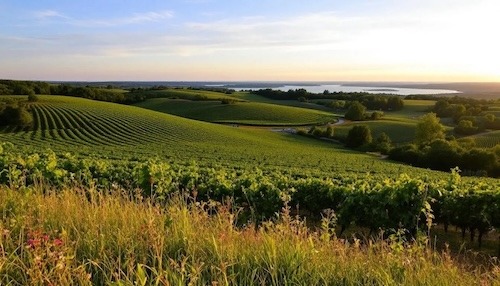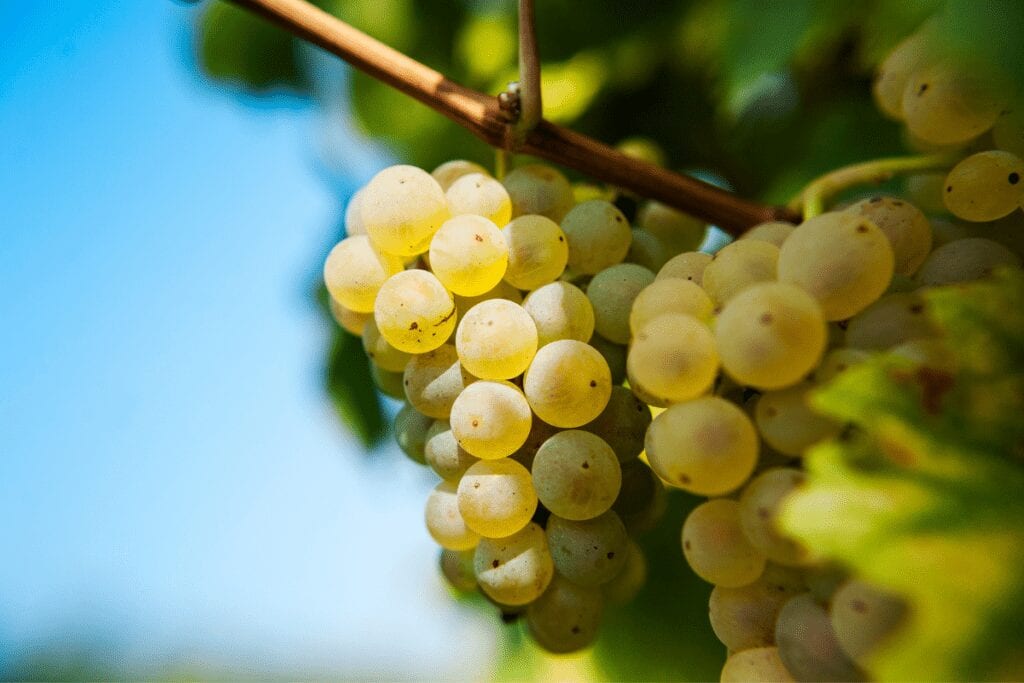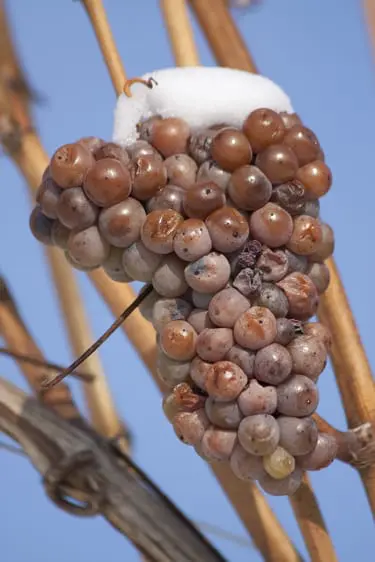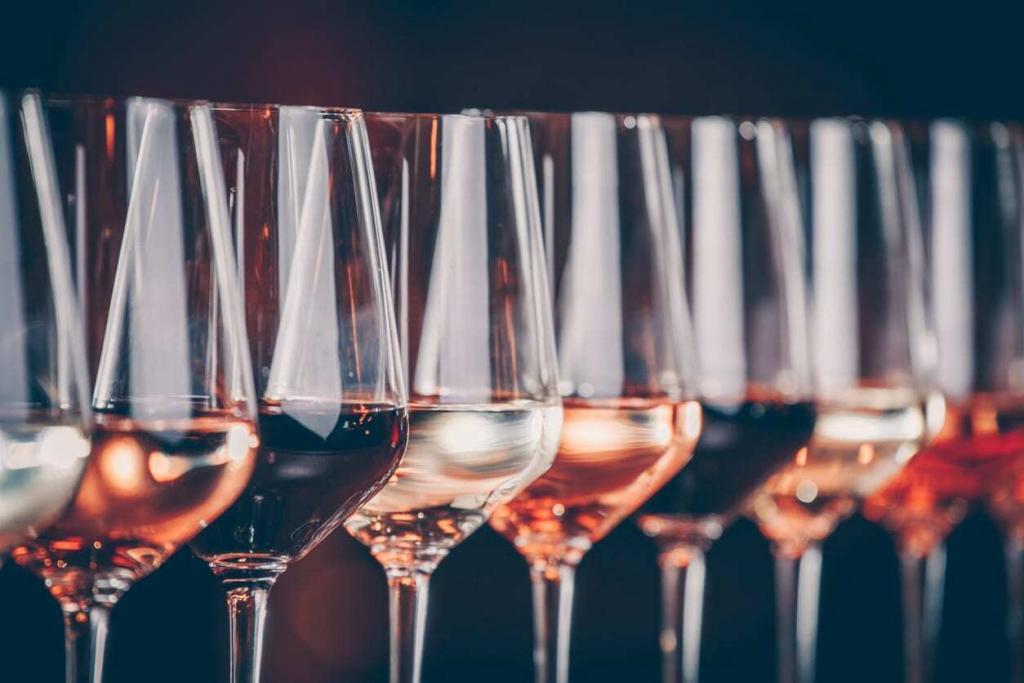The Niagara Escarpment is one of New York’s newer wine regions – it only got official recognition as an AVA – American Viticultural Area – back in 2005. You’ll find it right near Niagara Falls, which makes it easy to pair a wine tasting vacation with viewing Niagara Falls.
The Niagara Escarpment is basically the American side of Ontario’s well-established Niagara Peninsula wine country. So while the Canadian side has been making wine for much longer, this New York wine region is like its younger sibling, sharing a lot of the same climate and geography that make the area great for growing grapes. But, with only about a dozen wineries currently operating in the AVA, it has remained pretty under the radar.
Carpe Travel's comprehensive guide of the Niagara wine trails & region will take you through what you need to know to plan the perfect wine experience in this remarkable area.

WHERE IS THE NIAGARA ESCARPMENT?
The Niagara Escarpment AVA spans an impressive 60-mile route through Niagara, Orleans, and Monroe counties, making it easily accessible for day trips or extended wine tourism adventures. Located just minutes from the world-famous Niagara Falls, this wine region offers the unique opportunity to experience two of NY’s most celebrated attractions in a single visit.
GETTINGTHERE
The region's strategic location provides convenient access from major cities - it’s a short drive from Buffalo and close to Rochester, making it suitable for visitors throughout western New York and beyond. If you plan to fly into the region, the Buffalo Niagara International Airport (BUF) or the Niagara Falls International Airport (IAG) are good options. The latter is smaller and may have fewer flight options.
WHAT IS The Niagara Wine Trail?
The Niagara Wine Trail is what you will see, hear (and find in online searches) during your visit to the Niagara Escarpment AVA. It is basically the wine touring route that takes you through the 60 miles of wine country in Niagara, Orleans and Monroe counties. Think of it as a self-guided road trip through wine country, as it connects the different wineries scattered across the region for you to hop from one to another at your own pace.

HISTORY
The area’s winemaking history stretches back many years, with the first grape plantings and wineries established in Lockport during the 1860s.
This rich heritage of production has evolved into a modern wine region that successfully balances tradition with innovation, creating an environment where both established vintners and newcomers can thrive.
The Niagara Escarpment American Viticultural Area (AVA), formally established in 2005, encompasses approximately 18,000 acres within Niagara County. This designation recognizes the unique terroir that makes this region particularly suitable for growing premium wine grapes, distinguishing it from other wine-producing areas in the state.
What Makes the Niagara Wine Region Special
The secret to the Niagara wine region’s success lies in its exceptional geography and climate.
Lake Ontario serves as a massive thermal regulator, moderating temperatures throughout the year and protecting vineyards from the harsh winter conditions that can devastate grape vines in continental climates. This lake effect extends the growing season and minimizes the risk of winter damage, creating ideal conditions for both cold-hardy varieties and delicate European grape types.
The Niagara Escarpment itself plays a crucial role in the region’s viticultural success. This dramatic geological formation enhances sunlight exposure and provides excellent drainage – two critical factors for producing high-quality wines. The combination of favorable slopes and the lake’s moderating influence creates microclimates that allow vintners to grow grape varieties that would struggle elsewhere in NY.
Most wineries in Niagara wine region are family-owned operations where visitors can often meet the winemakers themselves and learn firsthand about their passion for the craft. This personal attention creates authentic experiences that larger commercial operations simply cannot match.
The region boasts the largest acreage in New York State suitable for vinifera grapes, including cabernet franc – the European species prized for producing world-class wines. This vast potential for expansion, combined with relatively affordable land costs compared to other premium wine regions, continues to attract new vintners and investment in the area.
Visitors consistently praise the charming, unpretentious atmosphere that characterizes the trail’s wineries. From modern tasting rooms with panoramic lake views to rustic barns converted into intimate tasting spaces, each stop offers its own unique character while maintaining the warm hospitality that defines the region.
Wine Varieties & Specialties
For a long time, wineries in the Niagara Escarpment mostly planted native American grapes and hybrid varieties – you know, the hardier stuff that could handle the climate. But the land here turned out to be really good quality, so more and more growers are now planting vinifera varieties – the classic European wine grapes like Pinot Noir, Riesling, and Chardonnay.

Pinot Noir thrives in the region’s moderate climate, producing elegant wines with the complexity and finesse that have made this variety famous worldwide. Local winemakers have mastered the delicate art of Pinot Noir production, creating wines that showcase the unique terroir of the Niagara Escarpment.
Chardonnay represents another flagship variety, with local producers crafting everything from crisp, unoaked styles that highlight the grape’s natural acidity to rich, barrel-aged wines with depth and complexity. The variety’s versatility allows winemakers to express their individual styles while showcasing the region’s distinctive character.
Riesling has found an ideal home in the Niagara region, where the grape’s natural acidity is preserved by the moderate climate. Local Rieslings range from bone-dry expressions that pair beautifully with local cuisine to off-dry styles that appeal to a broader range of palates.
The region’s red wine production extends beyond Pinot Noir to include impressive Cabernet Franc, Cabernet Sauvignon, and Merlot. These Bordeaux varieties benefit from the lake’s moderating influence, which allows for proper ripening while maintaining the structure and complexity that define great red wines.
And then there's the star...
One of the region’s most celebrated specialties is ice wine, a dessert wine that takes advantage of the area’s reliably cold winters. This labor-intensive production method involves allowing grapes to freeze naturally on the vine before harvesting, concentrating their sugars and flavors into an intensely sweet and complex wine that has earned international recognition.
Several local producers have also ventured into mead production, crafting honey wines that showcase local honey sources and traditional fermentation techniques. This ancient beverage style adds another dimension to the trail’s offerings and appeals to visitors seeking unique and historical wine experiences.

Planning Your Niagara Wine Country Vacation
KEY WINERY LOCATIONS & TOWNS
The region winds through several charming towns, each offering its own character and collection of distinctive wineries. Each town along the Niagara Wine Trail maintains its own character, from historic main streets lined with antique shops to rural roads bordered by working farms. These charming small towns provide context for the wine experience, allowing visitors to understand the agricultural heritage that underlies the region’s success.
Lockport serves as a historical anchor for the region’s wine industry, being home to some of the earliest grape plantings in the 1860s. Today’s Lockport area wineries blend this rich history with modern winemaking techniques, offering visitors both educational experiences and exceptional wines. The town’s proximity to other attractions makes it an ideal base for wine trail exploration.
Newfane has emerged as a particular highlight for serious wine enthusiasts. This area benefits from optimal microclimatic conditions and hosts several estate wineries known for their meticulous attention to viticulture and winemaking. Visitors to Newfane wineries often discover small-production wines that showcase the region’s potential for premium quality.
Burt offers convenient access for tourists combining wine tasting with Niagara Falls visits. The wineries in this area understand their role in the broader tourism ecosystem and often provide experiences designed to complement other regional attractions while maintaining their focus on quality wine production.
WHERE TO STAY IN THE NIAGARA WINE REGION
Where to stay when exploring the Niagara Wine Trail? You can choose to stay in nearby Buffalo or at hotels near Niagara Falls, using the wine trail as a day trip destination. If you do the latter, make sure to check that the hotel you book is in the US, not Canada, otherwise you will need to travel with your passport.Wyndham Garden at Niagara Falls, Hanover House Bed & Breakfast and The Little Italy Bed & Breakfast at Niagara Falls are good options on the US side.
For lodging closer to the Niagara wine trails, check out the following options.
– Wilson: The Wilson Boat House
– Lockport: The Lake Ontario Motel and Inn, Spark by Hilton
– Newfane: Cooke’s Creekview Bed and Breakfast
– Lewiston: Niagara Crossing Hotel & Spa
– Lockport: Lockport Inn & Suites
WHEN TO VISIT
The best times to visit the Niagara wine region will vary depending on your interests and the type of experience you’re seeking…and when life allows you to make it happen.
Spring visits offer the excitement of watching vineyards come to life as new growth begins and winemakers release wines from the previous vintage. The moderate temperatures make outdoor exploration comfortable, though visitors should be prepared for variable weather conditions.
Summer provides the most pleasant weather for extended outdoor visits and offers opportunities to see the vineyards in full leaf. Many wineries extend their hours and offer outdoor tasting options during peak tourist season. However, summer weekends can be crowded, particularly on holiday weekends.
Fall presents perhaps the most magical time to visit, with harvest season bringing vineyards to life with activity. Many Niagara wineries offer special harvest experiences, allowing visitors to participate in or observe the winemaking process firsthand. The autumn foliage adds visual appeal to the drive between wineries.
Winter visits provide intimate experiences with smaller crowds and opportunities to taste ice wine production in progress. While some wineries may have reduced hours, those that remain open often provide cozy atmospheres perfect for wine education and tasting.
GETTING AROUND
Transportation planning is crucial for wine trail visits. Designated driver arrangements are essential, whether through traveling with non-drinking companions or utilizing organized tour services that handle transportation between wineries. Many local companies offer wine trail tours that include transportation and sometimes lunch or dinner pairings.
Recommended Tours:
BEYOND THE VINES
The Niagara Wine Trail offers much more than just wine tasting, with numerous additional attractions that create well-rounded regional experiences. Historical sites throughout the area showcase the rich heritage that predates the modern wine industry and provides context for understanding the region’s development.
Farm-to-table restaurants have emerged along the trail, featuring local cuisine that pairs perfectly with regional wines. These establishments often source ingredients from the same agricultural area that supports the wineries, creating genuine terroir-driven dining experiences.
Seasonal events and wine festivals throughout the year provide special opportunities to experience the region’s community spirit. Harvest festivals in the fall, ice wine celebrations in winter, and spring release parties offer chances to meet winemakers and fellow wine enthusiasts while enjoying special tastings and activities.
Outdoor enthusiasts, head to the Niagara Gorge Trails to find great hiking trails and scenic viewpoints that showcase the natural beauty of the Niagara Escarpment.
Shopping opportunities abound at local artisan shops and markets that complement the wine trail experience. Head into Lewiston’s center street for great shopping and restaurants or the quaint, historic downtown of Medina.
The proximity to Niagara Falls creates obvious opportunities for combining natural wonder with wine appreciation. Many visitors spend mornings at the falls and afternoons on the wine trail, or vice versa, making efficient use of their time in the region.
For history buffs go check out the Historic Fort Niagara which was used by the military until after World War II.
REMINDERS: Tips for Niagara Wine Trail Visitors
Maximizing your wine trail experience requires strategic planning and realistic expectations about what can be accomplished in a single day or weekend visit. Most visitors find that three wineries represent a reasonable number for a full day of tasting while allowing time to properly appreciate each stop.
A designated driver strategy is absolutely essential for wine trail visits. This responsibility can be rotated among group members across multiple days, or visitors can hire professional transportation services.

When purchasing wines during your visit, consider shipping options for larger quantities. Many wineries offer shipping services that allow you to enjoy wines at home without worrying about transportation logistics. This proves particularly valuable for visitors traveling from distant locations or using air travel.
Wine club memberships offer excellent value for visitors who discover favorites during their trail experience. These programs typically provide discounts on purchases, access to limited-production wines, and advance notice of special events. Club members often receive priority treatment during busy periods.
Photography opportunities abound throughout the trail, from sweeping vineyard vistas to intimate tasting room scenes. However, always ask permission before photographing in tasting rooms or during production activities. Many wineries welcome social media promotion but appreciate being asked first.
Pace yourself throughout the day by eating appropriate food and drinking water between tastings. Many wineries offer food pairings or light snacks that enhance the tasting experience while helping maintain clear palates and responsible consumption levels.
Consider keeping tasting notes during your visit to help remember favorites and guide future purchases. Simple notes about wine styles, food pairing suggestions, and personal preferences prove invaluable when deciding which wines to purchase or revisit. Or, go simple and just take a picture of the wine bottle. I like to use Vivino, a wine app to keep track of my wines and notes so I can go back and review things – or buy them at a later date.
Plan your route efficiently by grouping geographically close wineries and accounting for travel time between stops. The rural nature of the region means that GPS navigation is essential, and visitors should allow extra time for scenic driving between locations.
Whether you’re planning a day trip from nearby cities or an extended wine-focused vacation, the Niagara wine region rewards visitors with discoveries that go far beyond expectations. The combination of exceptional wines, beautiful landscapes, and welcoming people makes this trail a destination worthy of repeated visits as you explore all the region has to offer.
Elaine Schoch is an award-winning travel writer, wine judge, American Wine Specialist and certified by the Wine & Spirit Education Trust (WSET II). At Carpe Travel she shares wine travel destination guides for ALL WINE LOVERS – from novices to experienced pros – to help them plan their wine adventures, arming them with insider tips, must-visit spots, and things to see and do beyond the vines.


